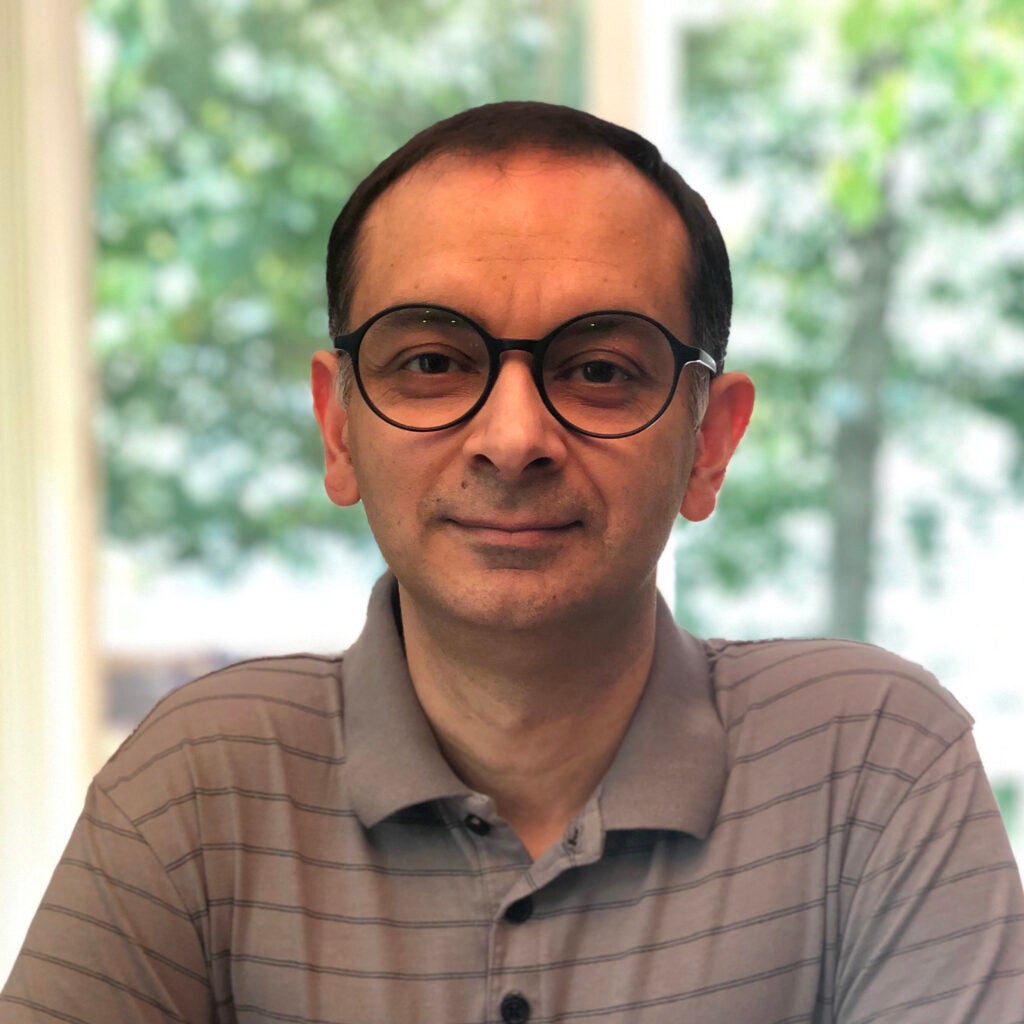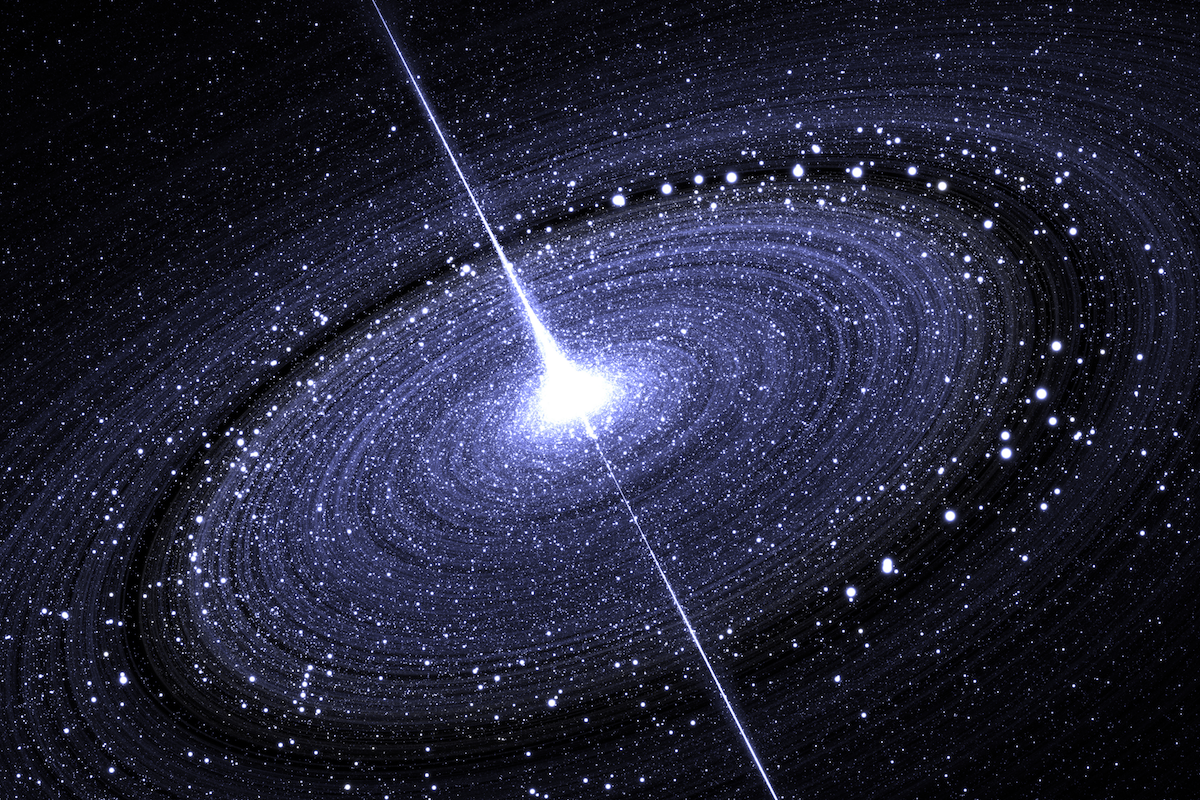KINGSTON, R.I. – Jan. 31, 2024 – The European Space Agency (ESA) has given the go-ahead to the 2035 launch of a powerful space-based observatory with the ability to detect gravitational waves caused by violent astrophysical events and probe the entire history of the Universe. The Laser Interferometer Space Antenna (LISA) project is a collaboration among ESA, NASA and international scientists, including researchers at the University of Rhode Island.

The mission’s goal is to detect gravitational waves—“ripples” in the fabric of spacetime that were predicted over a century ago by Albert Einstein—that are emitted during the Universe’s most powerful events, including the merging of two supermassive black holes that lurk at the center of most galaxies. Just one supermassive black hole is millions to billions of times larger than the Sun. LISA may also provide scientists a glimpse of the Milky Way just a few seconds after the Big Bang.
URI physics professor Gaurav Khanna, Ph.D., an expert in black holes and gravitational waves, co-authored a waveform modeling white paper for the LISA project with Scott Field, Ph.D., a URI adjunct professor who is on sabbatical from the University of Massachusetts.
“LISA is poised to revolutionize our understanding of astronomy, cosmology, and fundamental physics for decades to come,” said Field. “I am thrilled that our regional and interdisciplinary collaboration between UMass and URI is driving forward current and future gravitational-wave science.”
With the ESA’s announcement last week, LISA moves to the construction phase, with a launch scheduled for 2035 aboard Ariane 3, a European carrier rocket. The space antenna actually consists of three space crafts configured in a perfect equilateral triangle—each pair 1.6 million miles apart—that will trail the Earth as it goes around the Sun. The triangle of laser light can detect distortions in space caused by gravitational waves.
“It is breathtaking to imagine these detectors flying in space while making the most precise distance measurements ever made by mankind,” said Khanna. “It has been a long wait, but it is going to be well worth it.”
Gravitational waves from collisions of solar mass-sized black holes are routinely detected by ground-based observatories, such as the National Science Foundation’s Laser Interferometer Gravitational-wave Observatory (LIGO), which first detected the waves in 2015. But these facilities are limited in what they can detect because of low-frequency seismic noise from ground vibrations.
Free from this in space, LISA will be able to search for gravitational waves emitted by white dwarf binaries; supermassive black hole systems; and cosmic strings, one-dimensional objects hypothesized to have formed in the early Universe, Khanna said.
The mission will also probe such mysteries as expansion of the Universe, trace the origin, growth and mergers of massive black holes across cosmic ages, and explore the fundamental nature of gravity and black holes.
Key to the work of LISA is the need for very high accuracy gravitational wave signal “templates.” Computed using Einstein’s general theory of relativity, the “templates” are based on modeling of astrophysical binary systems, such as black holes, and computing the detailed pattern of wave emissions.
Khanna has been on the forefront of such modeling since his graduate school days in the 1990s. His work over the last 20 years has been funded by the National Science Foundation. In 2021, he was named a Fellow of the American Physical Society.
“Theory based modeling is critical for the success of missions like LIGO and LISA since signal templates are absolutely necessary for the detection and interpretation of the gravitational waves radiated by an astrophysical source,” Khanna said.
Over the past decade, Khanna has closely collaborated with Field and Vijay Varma, an assistant professor at UMass Dartmouth. Along with a team of students—including URI Ph.D. candidate Ritesh Bachhar—they have developed high-accuracy models of black hole binary systems with a large mass-ratio, allowing for systems that involve the capture of stars or solar-mass black holes by supermassive black holes. These are systems that LISA will be able to observe very precisely, Khanna said.
Khanna and Field, who co-authored the LISA waveform modeling working group white paper, are members of the LISA Consortium. They also founded the UMass-URI Gravity Research Consortium. The research initiative focuses on computational gravitational physics and includes URI faculty: Rob Coyne and Michael Puerrer, members of the LIGO Science Collaboration who are among the top cited researchers at URI, and Doug Gobeille, who leads the URI Quasar Group.
“The URI Physics Department has played an active role in the study of gravitational waves through LIGO and is now at the forefront of the next generation of observatory in LISA,” said Len Kahn, chair of the department. “This is an exciting time for the department.”
The research team leverages the computational resources of the Massachusetts Green High-Performance Computing Center and the URI Center for Computational Research. Their work is supported by the National Science Foundation.

